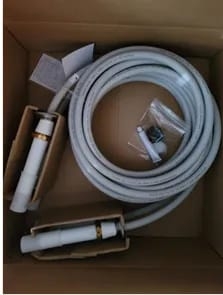Description
Purpose:
These devices are used in healthcare settings to monitor vital signs of patients. They display information like heart rate, blood pressure, oxygen saturation, and other relevant parameters. This helps medical professionals assess a patient’s condition and make informed decisions about their care.
Features:
- Display: The devices have a clear display screen that shows the patient’s vital signs in a readable format. The display may be touch-sensitive for easy navigation and input.
- Data Recording: They likely have the capability to record and store patient data for later analysis and review.
- Alarms: The monitors may include audible and visual alarms to alert the healthcare staff of critical changes in the patient’s condition.
- Connectivity: Some monitors may have connectivity options like Wi-Fi or Bluetooth to transmit data to other devices or systems.
- Portability: The devices appear to be portable with handles, making them suitable for use in various settings within a healthcare facility.
Safety Considerations:
- Accurate Readings: It’s important to ensure that the monitors are calibrated correctly and maintained properly to provide accurate readings.
- Alarm Management: Alarms should be configured appropriately to avoid false alarms and alert the staff to genuine emergencies.
- Battery Life: If the devices are battery-powered, it’s crucial to monitor battery levels and ensure they are adequately charged to avoid interruptions in monitoring.
- Regular Maintenance: Regular maintenance and calibration of the monitors are essential to maintain their accuracy and reliability.
Additional Notes:
- The specific features and capabilities of the monitors may vary depending on the manufacturer and model.
- It’s important for healthcare professionals to receive proper training on the use and interpretation of these devices.
If you have any more questions or need more specific information, feel free to ask!
Reviews (0)
You must be logged in to post a review.












Reviews
There are no reviews yet.